What's in a name?
Often, when learning new openings, we forget to discover more about the history and the players who contributed to that opening, because we are just short-sightedly searching for the next weapon of mass destruction to unleash at a weekend tournament.
Instead the history of a chess opening can also enlighten the opening itself, and give us ways to better remember what we should play and why. Today we're name-dropping Edgar Colle. He was a player who didn't reach his best form due to poor health that also damaged his tournament results. He was born in 1897 and died in 1932 — yes, just 35 years old. We use his name in relation to an opening-system which occurs after the moves: d4, ♘f3 and e3, the main idea being a break in the center when the time is right with the e3-e4 push.
Here few of the games played by Colle with this opening which are worth watching for the fireworks!
Click or tap a game in the game list to switch
George Koltanowski is likely more famous than Colle for his blindfold prowess. In 1960 he played 56 consecutive blindfold games at a pace of 10 seconds per move. He had previously set a record for playing 34 simultaneous blindfold games 1937. As with a number of chess contemporary's, Koltanowski was saved from the tragedy of the second world war, in which many of his relatives died, because he was in South America at the time, and later was able to get a visa to the USA.
Koltanowski lead a very active chess life in US, covering many roles. For example in 1974 he served as U.S. Chess Federation President. He also wrote many chess books, and he mentioned he played the Colle as tribute to his old friend Edgar Colle.
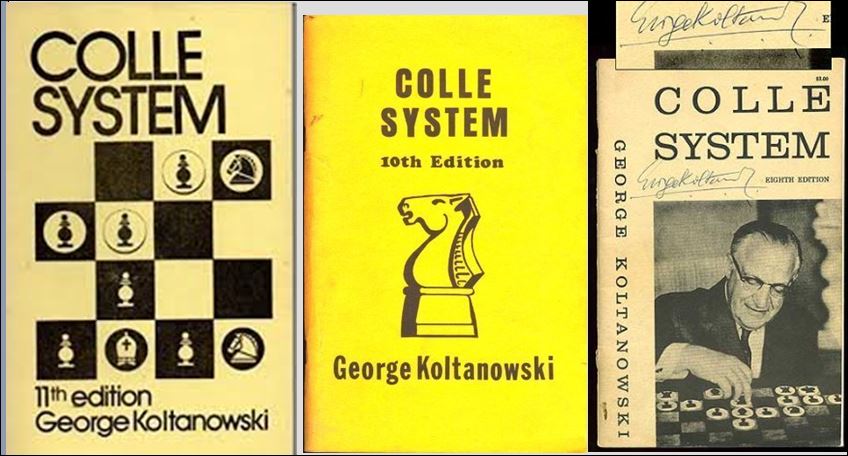
Books of George Koltanowski
As Williams himself explained in his 'Simon Says' show, the DVD would have been better titled as Colle-Zukertort, because Williams, in order to give more of an attacking repertoire, focuses on the move b3 which was played by Zukertort quite some years before Colle and Koltanowski. Zukertort is modestly famous thanks to his involvement in the first official World Championship match with Wilhelm Steinitz.
Here few of the games played by Zukertort in the end of the ninteenth century with 'his' pawn structure, that Williams includes on the DVD:
Click or tap a game in the game list to switch
Now, a brief aside on the advantages of MegaBase with around 8 million games (I lost count when it reached 5 million). When I began to research this opening to gain a historical insight I became aware of another player: Rudolf Charousek. Like Colle and many other chess players of the past, Charousek's health was bad and he died even earlier than Colle. Dying in ones 20s or 30s was not unheard of in those days before antibiotics. In the early twentieth century, the average life for a man in the United States was 49 years old — now it's is around 79. In any case, I wanted to show one game I found with the "Colle" system played by Charousek — chess archeology if you will — to remark on his unfortunately short-lived 27 years.
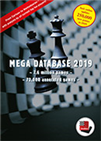 The "Mega" is the database every serious chessplayer needs. The database contains 7.6 million games from 1500 to 2018, in highest quality standard, full of top level analyses and completely classified.
The "Mega" is the database every serious chessplayer needs. The database contains 7.6 million games from 1500 to 2018, in highest quality standard, full of top level analyses and completely classified.After this historical detour to look at some of the main actors in the development of the Colle, we reach the review proper — exciting developments. Often some chess player dreams, becomes reality! There are always more exciting ways to train. Does this mean I'm going to become a world champion? Very likely not — age, family and work are heavy influences (plus I'm not giving up pizza and cheesecake!).
Anyway, I'd like to mention few novelties I've noticed right away in this new DVD, compared to previous one. There are three databases, one is the extra games which we now have with every FritzTrainer. It contains a total of 60 games. But then comes the novelty, a database of Colle tactics! It has 52 games. Each game has multiple questions like the following:
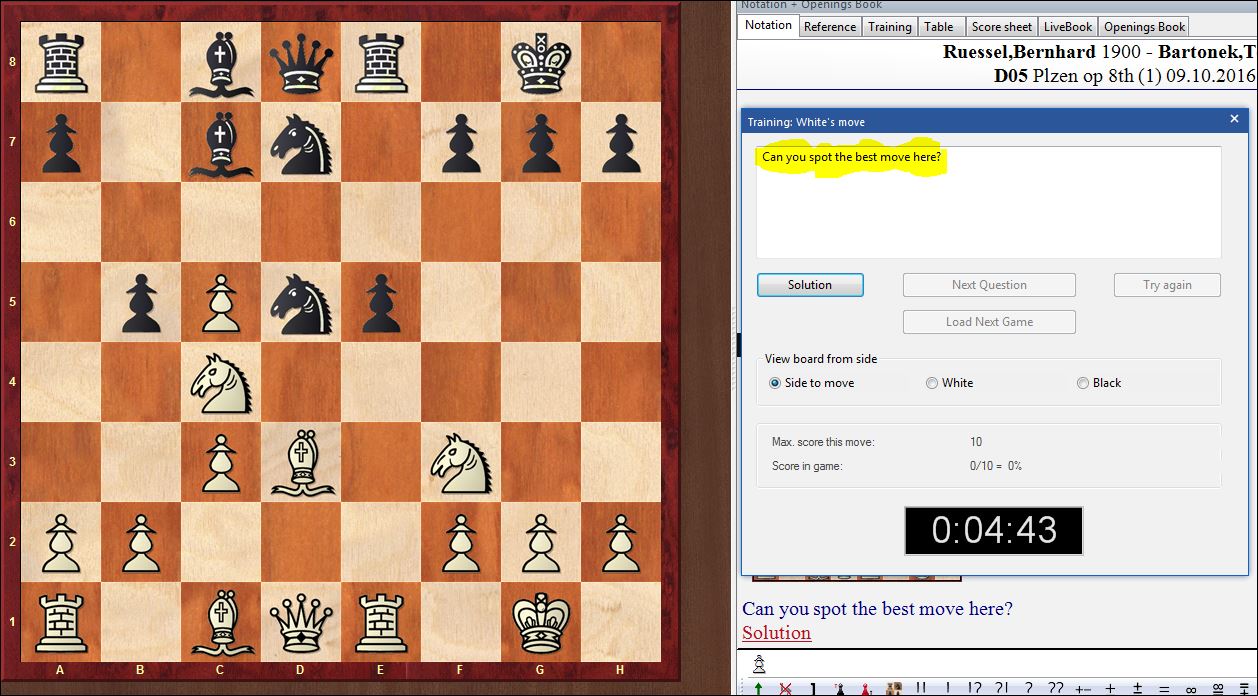
"Can you spot the best move here?"
The question has a time limit of five minutes, which is a good time for spotting a good move, like in a tournament game.

Feedback for your move
Once the move is found, one gets the feedback if it was correct or not, and there could be further questions depending if the game in question has more critical points, or not, and then one can just see how the game ended. This is a great improvement by ChessBase, because often online we solve lots of tactics, but they never actually happen in our games. Why? Because due to pawn structures or piece placement, in relation to the opening chosen, one cannot encounter those tactical themes. Instead here we have a blueprint of 50 typical tactics coming out from the Colle-Koltanowski opening, helping us also to remember typical themes and traps we can spring upon our unaware opponents.
Then there is another very exciting novelty: the training section! This section will send us to the ChessBase online training tools. The one I found most useful was the possibility to play different Colle-Koltanowsky linesa gainst Fritz 16. I played it a first time, then analyzed what went wrong, and played them a second time. I saved all the games in a database I made just for the Colle training games in my ChessBase 15.

The modern interplay between online and offline ChessBase tools
What's in the series?
Williams is honest in trying to give us a new weapon for the opening, while at the same time admitting in the beginning of the DVD, this might not be the best in all situations. In fact there is a video titled: "When to play the Colle and when to play the Torre".
Williams says, in his opinion, the Colle is most effective on setups arising from the following moves: 1.d4 d5 2.♘f3 ♞f6 3.e3
He mentions some people think the Colle cannot be interesting, and he hopes to prove otherwise. However, honestly I had a master level friend who used it quite often, with great results. Yes, the opening was solid, giving Black chances to go wrong himself in the middlegame.

By the way, it is important to mention Williams has made two other related DVDs, one on the London, and one on the Torre attack, which cover all of the possible Black's answers, and give a complete repertoire. This is key, because this DVD on the Colle cannot cover all possible answers by Black.
Williams choice is supported also at top level. For example: Gata Kamsky in his book: Gata Kamsky Vol.1 awakening (1989-1996) on page 9, supports the idea of learning London and Torre (and consequently the Colle-Zukertort) with the following passage:
The Torre Attack and the London System were trusty weapons which were to serve me well for many years, even against the strongest opposition.
Williams shows the original setup used by Colle:
But in his opinion this doesn't offer any advantage to White.
Instead he focuses on the Colle-Zukertort which is the modern interpretation for gaining an advantage out of the opening. White plays b2-b3 instead of c2-c3, giving space to develop for the c1 bishop, and also prevent a possible black pawn on c5 from going to c4, troubling the bishop on d3.
The position which Williams will focus on teaching is the one which arises after the moves: 1.d4 d5 2.♘f3 ♞f6 3.e3 c5 4.b3 e6 5.♗b2 ♞c6 6.♗d3
Here if we could see the face of the bishop on b2, he would definitely be a happy bishop. Simon's will have to do:

A happy Ginger GM
 The point being White is going to have an advantage and a nice game thanks to the illustration of all the plans and ideas one should strive for in the game. Williams has undertaken extensive research of the literature, including the fundamental work by Rudel on the Colle-Zukertort. On this DVD we have an update of those books at GM-level understanding, stearing us toward the right ideas.
The point being White is going to have an advantage and a nice game thanks to the illustration of all the plans and ideas one should strive for in the game. Williams has undertaken extensive research of the literature, including the fundamental work by Rudel on the Colle-Zukertort. On this DVD we have an update of those books at GM-level understanding, stearing us toward the right ideas.
Williams notes that the Colle doesn't work well against an early 1...g6 or the King's Indian Defence (KID). But he explains when to use the Colle and when to use the Torre which does work well against these KID lines. In fact, Williams made me think of this word we don't use in chess: symbiosis. It comes from the Greek, like most scientific terms, and indicate the idea of "living together." Practically when two different organisms live together and in general are dependant on each other. In this case The Colle-Koltanowski (Zukertort) and the Torre are symbiotic openings, because depending on how Black answers, White may use one or the other to gain an advantage as White.
But, I'm sure by now you may have noticed a problem: What if Black waits to play g6 once White committed to e2-e3, e.g. after 1.d4 ♞f6 2. ♘f3 d5 3.e3 and now g6!
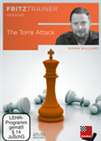 The Torre Attack is an extremely effective way of taking your opponent into an uncomfortable situation right from move one.
The Torre Attack is an extremely effective way of taking your opponent into an uncomfortable situation right from move one.
Williams gives credit where credit is due, mentioning he used Rudel's book as guide here. In this case a c4-setup is the best. 3...g6 4.c4:
At this point we understand the opening is intended for the tournament who wants to create a complete repertoire using 1.d4.
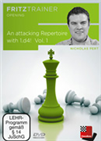 In this detailed “two-part” video series I take a look at a main line White system based on 1.d4. This series is aimed at the ambitious player who is looking to put maximum pressure on their opponent from the start of the game.
In this detailed “two-part” video series I take a look at a main line White system based on 1.d4. This series is aimed at the ambitious player who is looking to put maximum pressure on their opponent from the start of the game.Incidentally, ChessBase recently released a set of two FritzTrainers authored by GM Nick Pert — a complete repertoire with 1.d4 and c4. Yes, there is really no way to skip the hard work.
After the introductory video Williams dedicates a video just on move orders. I found this tendency among Grandmaster level players — they care a lot about move orders, and the resultant nuances to the position. I also noticed one can only claim to know an opening, once he has the right answer for each move order played by the opponent. I'd consider this is one of the most important videos in this DVD.
In another important video, Williams explains the different stages of the opening, and how to reach them. Here an example of stage 1, when the bishops are developed and White can castle:
And then of course the goal of stage 3 is to give a final successful attack on h7.
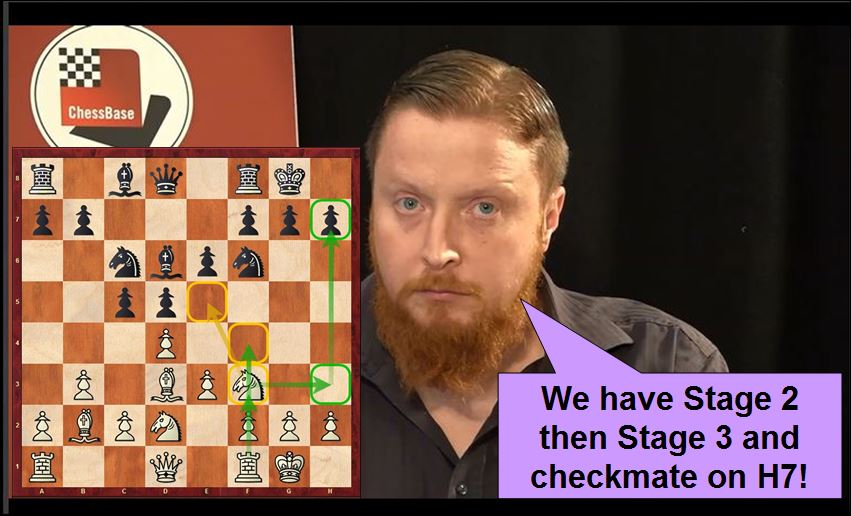
After the initial three videos, Williams continues to the second section with four videos of instructive games, illustrating all the themes we should remember. Then we pass to the chapter on the main lines of the Colle-Zukertort comprised of ten videos. We finally reach the last chapter which is based on sidelines, with nine videos.
Pros and Cons

GM Summerscale wrote a book, A killer Opening Repertoire, with an opening repertoire that gave him good results against GM-level opposition. But like Williams points out in the beginning, Summerscale had a big problem in the variation 1.d4 d5 2.♘f3 ♞f6 3.e3 g6 — this last move by Black was what Summerscale's opponents found to neutralize his repertoire.
Summerscale moved on to different openings, but Rudel found a possible solution, and Williams here gave us the latest update on what works and what doesn't. In general I believe in chess there is no success without hard work. With that being said, I believe at a certain point, if one truly wants to play 1.d4 he will have to learn or create a repertoire with 2.c4 as well. (See the aforemention Nick Pert series.)
The bottom line: don't be disappointed if one day you discover this DVD and the Torre are not working anymore. Eventually we all need to broaden our own repertoires in order to be have a long chess career whether at an amateur or professional level.
Final thoughts
Williams did a good job in outlining the pros and cons of this opening. He particularly stressed important squares where to develop our pieces, and the underlying rationale for doing so. In many cases the fight for control of a square was important for enabling our long term plans of attacking on the kingside (b4 comes to mind!).
What did I gain from this DVD? A lot. Yes, of course a new opening repertoire, which I can use to keep my opponents unbalanced. But most of all I was exposed to a lot of middlegame concepts which helped me understand better the difference in pawn structures between the London, and also the Torre. If your goal for this year is to grow as player, I believe these video series will all help, with their focus on tactics, pawn structures, plans and ideas to learn these openings like a pro.
The Colle-Koltanowski system is very easy to learn, yet an extremely dangerous opening.
Links
.jpeg)


















 The point being White is going to have an advantage and a nice game thanks to the illustration of all the plans and ideas one should strive for in the game. Williams has undertaken extensive research of the literature, including the fundamental work by Rudel on the Colle-Zukertort. On this DVD we have an update of those books at GM-level understanding, stearing us toward the right ideas.
The point being White is going to have an advantage and a nice game thanks to the illustration of all the plans and ideas one should strive for in the game. Williams has undertaken extensive research of the literature, including the fundamental work by Rudel on the Colle-Zukertort. On this DVD we have an update of those books at GM-level understanding, stearing us toward the right ideas.





